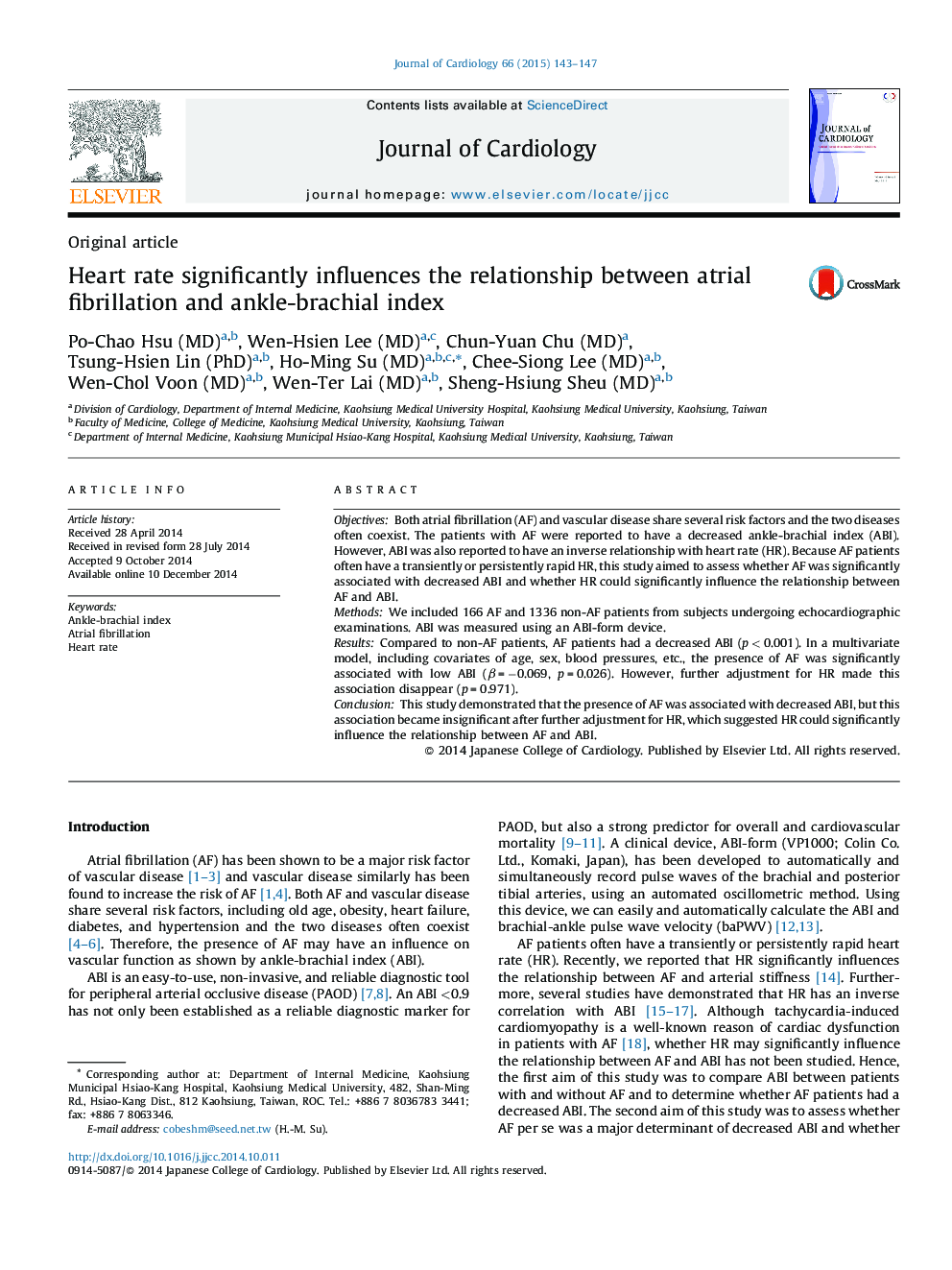| Article ID | Journal | Published Year | Pages | File Type |
|---|---|---|---|---|
| 2962946 | Journal of Cardiology | 2015 | 5 Pages |
ObjectivesBoth atrial fibrillation (AF) and vascular disease share several risk factors and the two diseases often coexist. The patients with AF were reported to have a decreased ankle-brachial index (ABI). However, ABI was also reported to have an inverse relationship with heart rate (HR). Because AF patients often have a transiently or persistently rapid HR, this study aimed to assess whether AF was significantly associated with decreased ABI and whether HR could significantly influence the relationship between AF and ABI.MethodsWe included 166 AF and 1336 non-AF patients from subjects undergoing echocardiographic examinations. ABI was measured using an ABI-form device.ResultsCompared to non-AF patients, AF patients had a decreased ABI (p < 0.001). In a multivariate model, including covariates of age, sex, blood pressures, etc., the presence of AF was significantly associated with low ABI (β = −0.069, p = 0.026). However, further adjustment for HR made this association disappear (p = 0.971).ConclusionThis study demonstrated that the presence of AF was associated with decreased ABI, but this association became insignificant after further adjustment for HR, which suggested HR could significantly influence the relationship between AF and ABI.
